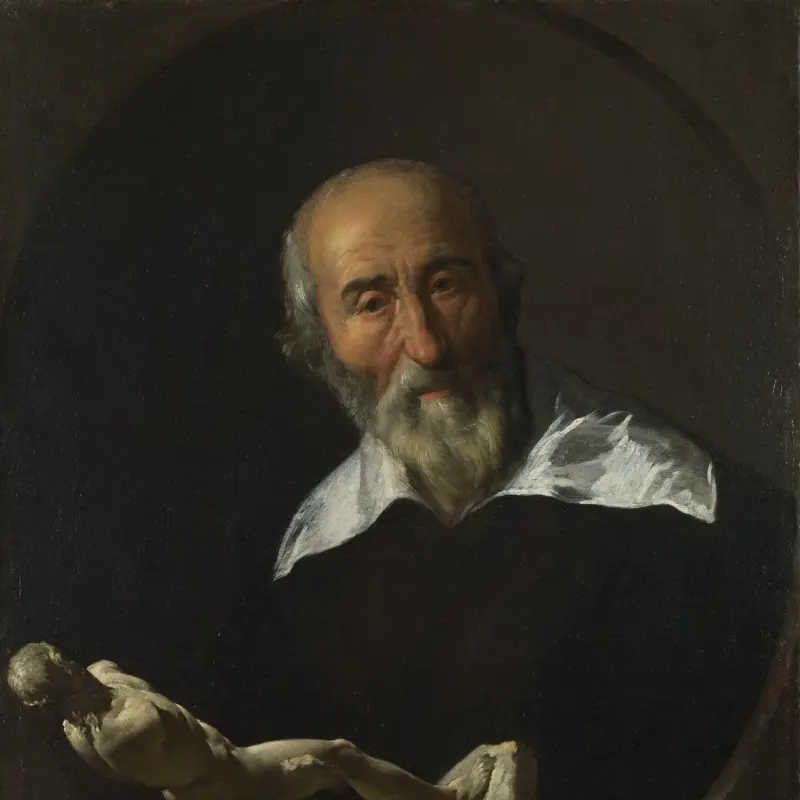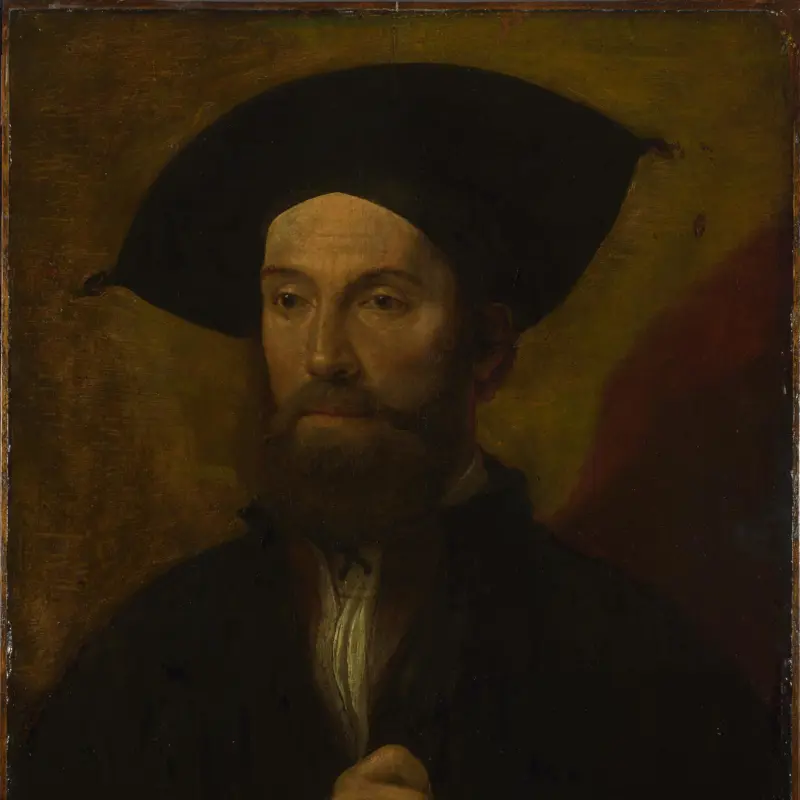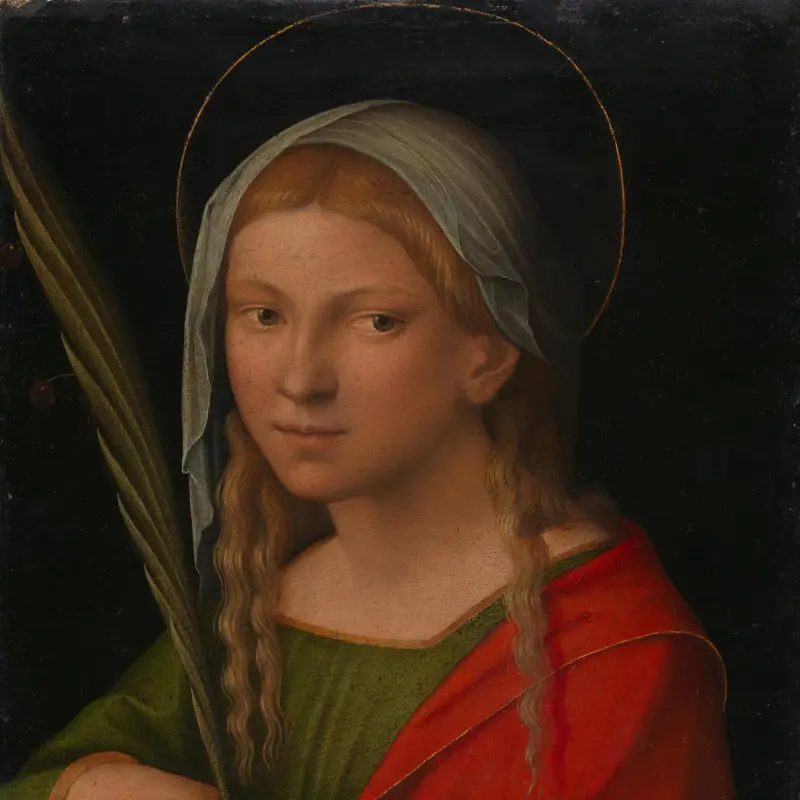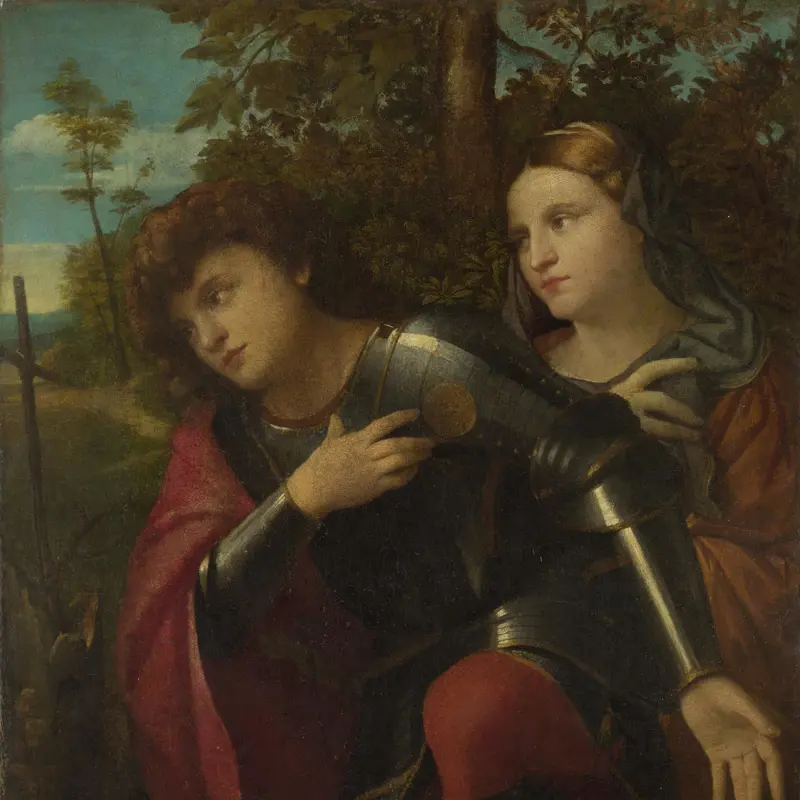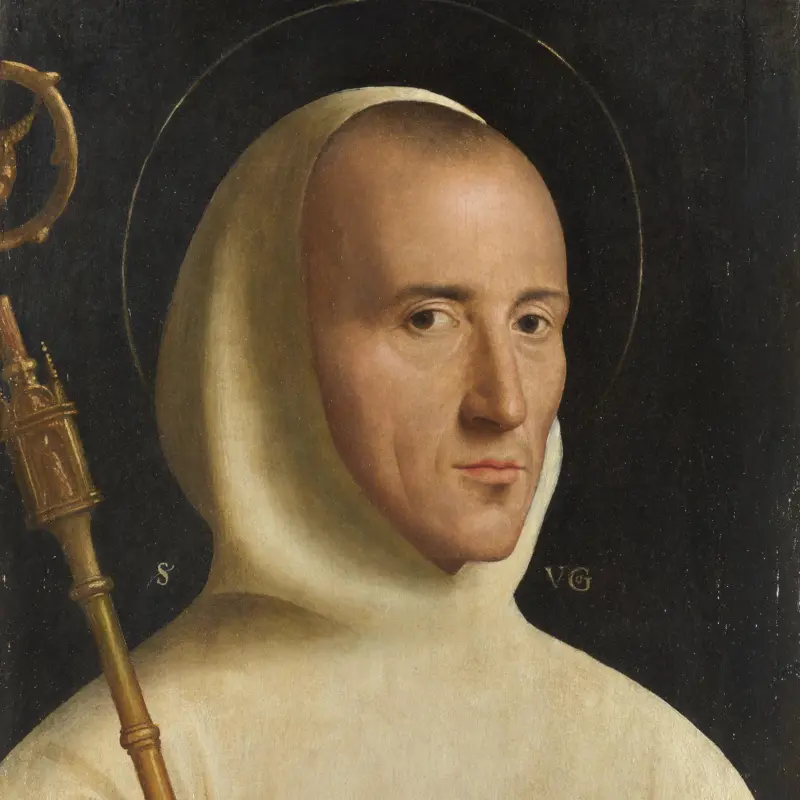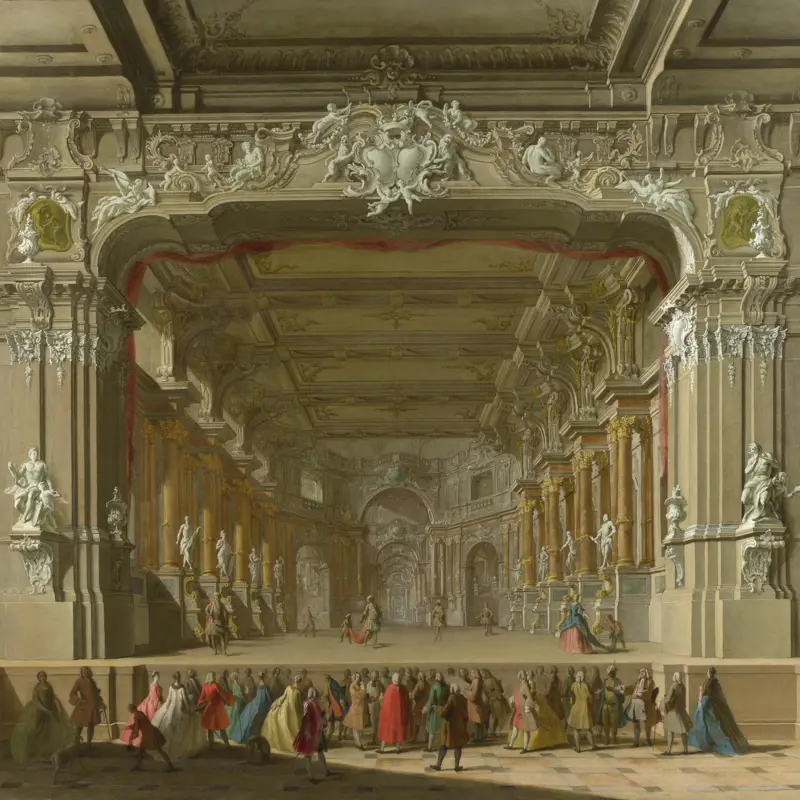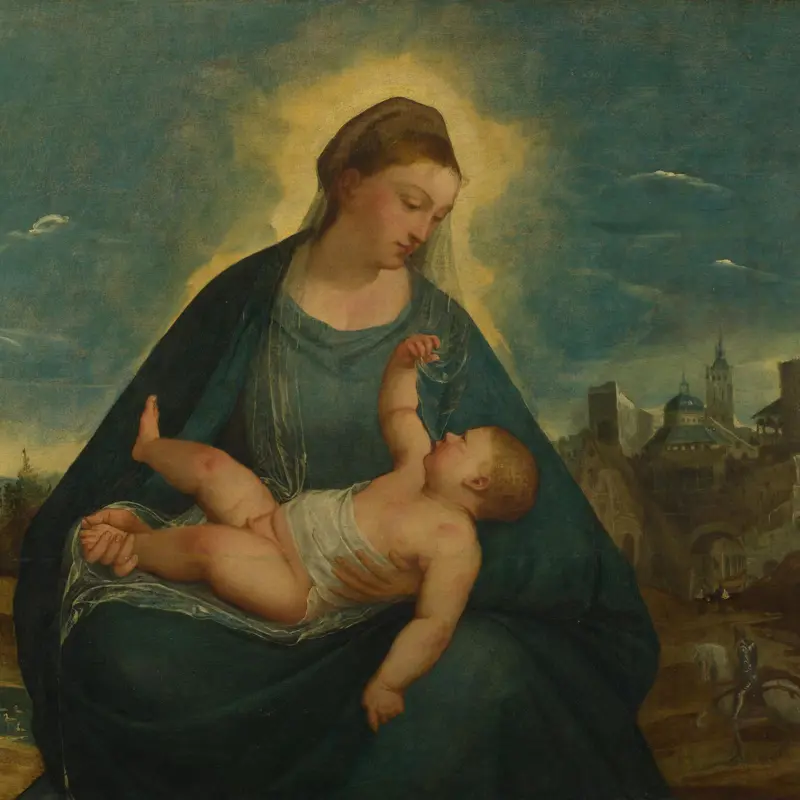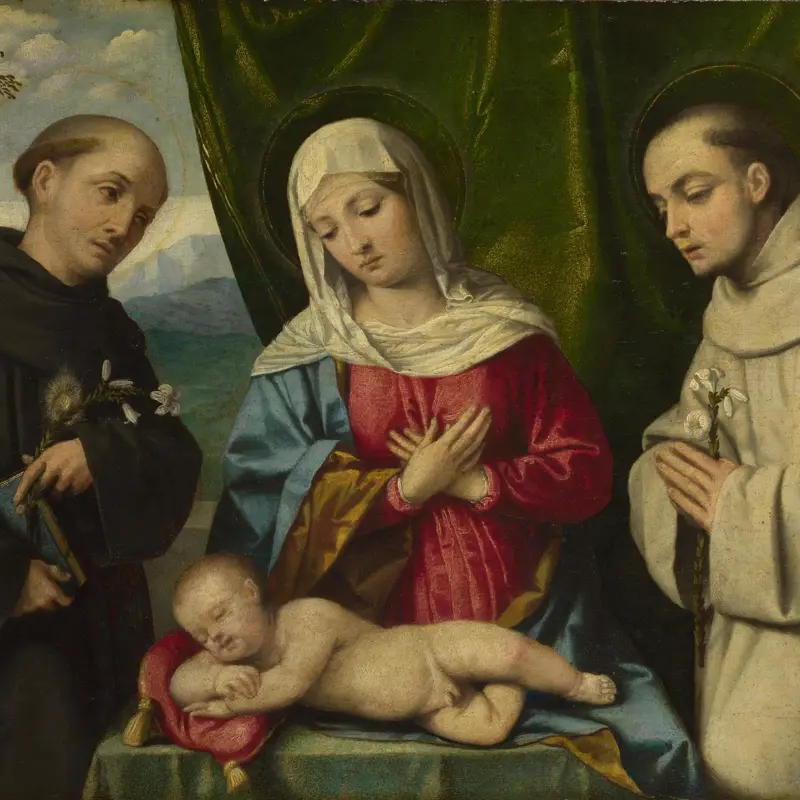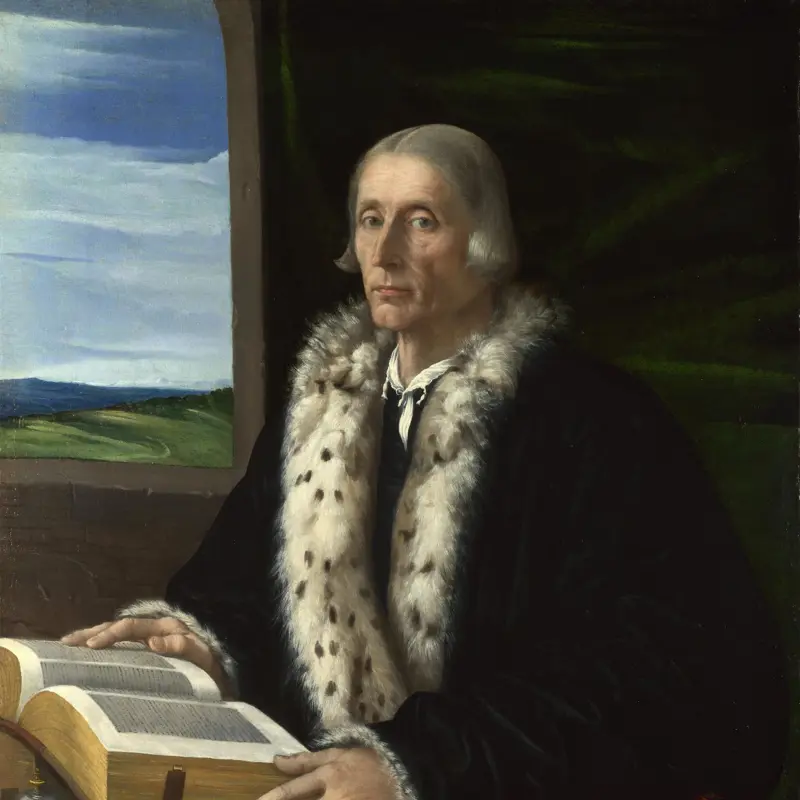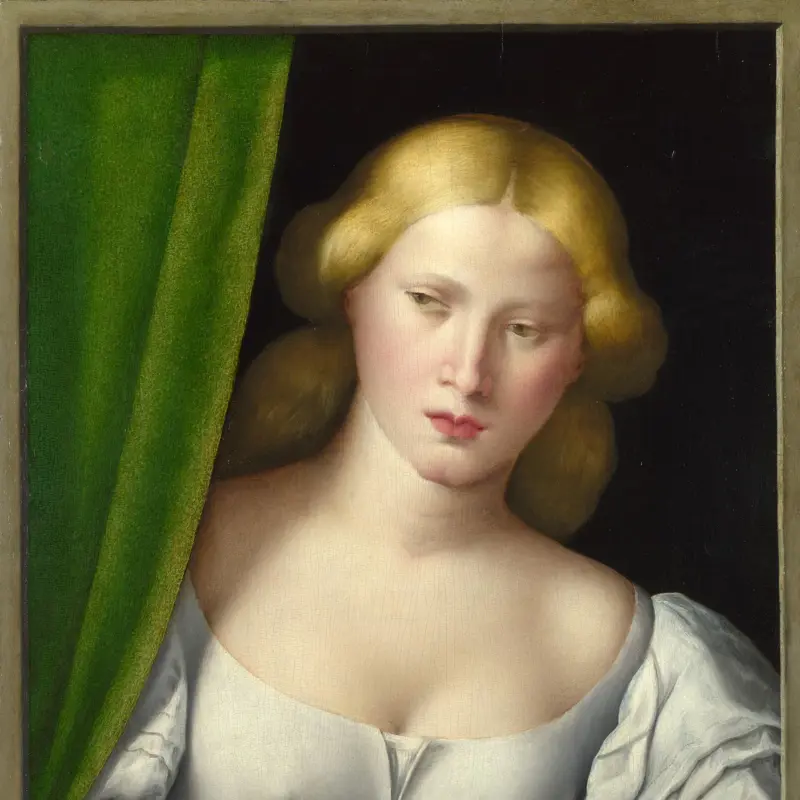Italian, North, 'Portrait of a Lady in a Plumed Hat', probably 1565-75
About the work
Overview
This unidentified woman wears a costume dating from the second half of the 1560s or early 1570s. Her feathered jewelled hat is influenced by fashion in Lombardy and Venice, and her costume resembles that in a portrait drawing of a similar date attributed to Sofonisba Anguissola (Staatliche Kunstsammlungen Dresden). The portrait has previously been thought to be by Giuseppe Salviati or Niccolò dell’Abate.
The lady wears a gold crucifix on a triple chain around her neck and a gold pendant hanging from a black ribbon. The figure in silhouette on her pendant holds a tall object that resembles a distaff, used in spinning. The distaff is the symbol of Nona, the Roman goddess of pregnancy and the spinner of the thread of life. Pregnant women called upon her when their baby was due to be born; the young lady may be pregnant and wearing the pendant as a charm.
Key facts
Details
- Full title
- Portrait of a Lady in a Plumed Hat
- Artist
- Italian, North
- Date made
- probably 1565-75
- Medium and support
- oil on paper, mounted on canvas
- Dimensions
- 44.8 × 34 cm
- Acquisition credit
- Sir Claude Phillips Bequest, 1924
- Inventory number
- NG4033
- Location
- Not on display
- Collection
- Main Collection
Provenance
Additional information
Text extracted from the ‘Provenance’ section of the catalogue entry in Cecil Gould, ‘National Gallery Catalogues: The Sixteenth Century Italian Schools’, London 1987; for further information, see the full catalogue entry.
Bibliography
-
1962Gould, Cecil, National Gallery Catalogues: The Sixteenth Century Italian Schools (excluding the Venetian), London 1962
-
1987Gould, Cecil, National Gallery Catalogues: The Sixteenth Century Italian Schools, London 1987
-
2001
C. Baker and T. Henry, The National Gallery: Complete Illustrated Catalogue, London 2001
About this record
If you know more about this work or have spotted an error, please contact us. Please note that exhibition histories are listed from 2009 onwards. Bibliographies may not be complete; more comprehensive information is available in the National Gallery Library.


